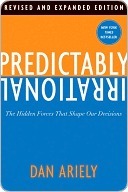Robert Louis Stevenson screamed in his sleep in the early hours of an autumn morning in 1885. Immediately after his wife awoke him, he set to work on what he called a “fine bogey tale”—Dr. Jekyll and Mr. Hyde—in which he said, “Man is not truly one, but truly two.” The book was an overnight success, and no wonder. The story captivated the imagination of Victorians, who were fascinated with the dichotomy between repressive propriety—represented by the mild-mannered scientist Dr. Jekyll—and uncontrollable passion, embodied in the murderous Mr. Hyde.
Welcome back. Just a moment while we sign you in to your Goodreads account.


